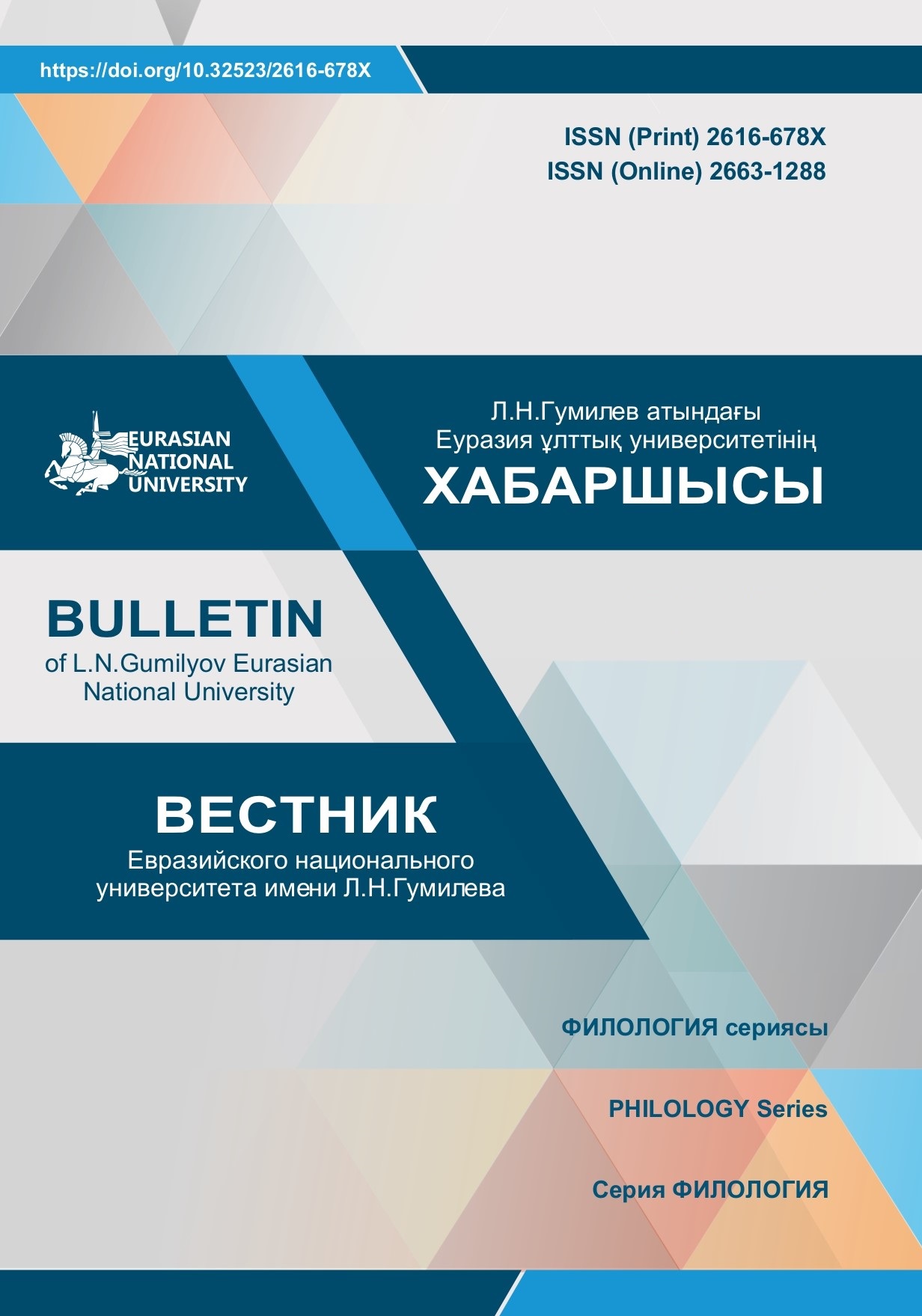Comparative analysis on translation of W. Shakespeare’s 104th sonnet into Kazakh
Views: 236 / PDF downloads: 766
DOI:
https://doi.org/10.32523/2616-678X-2023-143-2-153-164Keywords:
Khamit Yergaliev, Samuil Marshak, Emma Baldwin, stylistic devices, figures of speech, poetic spiritAbstract
Translation of the sonnet from one language to another is one of the most difficult types of
translation. The interpreter must use all his skills to convey not only the meaning, figurative language,
rhythm and rhymes, but also the poetic spirit of the author. The peculiarities of the English language
made it complicated to translate the sonnets into other languages. The sonnets of William Shakespeare are
difficult to translate in all their aspects. English poet captured all the stylistic layers of the language and
actively created neologisms using words from French and German. The versions of sonnet 104 by Khamit
Yergaliyev in Kazakh language and by Samuil Marshak in Russian language are considered in this article.
The research was completed by using a comparative method for detailed analysis of three variants of sonnet
104. According to the results of the study, similarities were indicated, and differences in the comparison
of three versions were revealed. In particular, the use and translation of simile, personification, metaphor,
hyperbole, and rhyme in Kazakh, Russian and English languages were studied and demonstrated in detail.
The article shows that Khamit Yergaliyev was able to masterfully convey the main meaning and the poetic
spirit of the 104th sonnet of William Shakespeare in such a completely different Turkic language as Kazakh
language. The results of the article can be applied in higher educational institutions at lectures and in
practical classes as an auxiliary material for learners in the specialty of philology and literary studies.
Moreover, provided data may be useful for research work of students, undergraduates and doctoral
students







